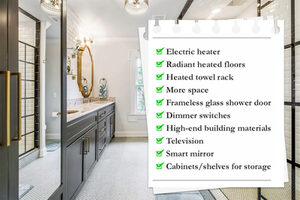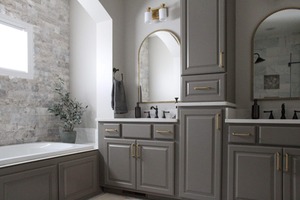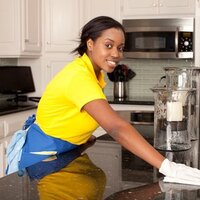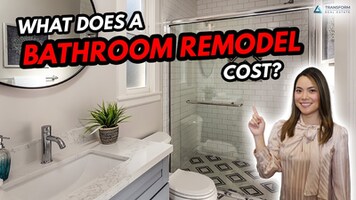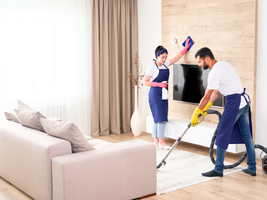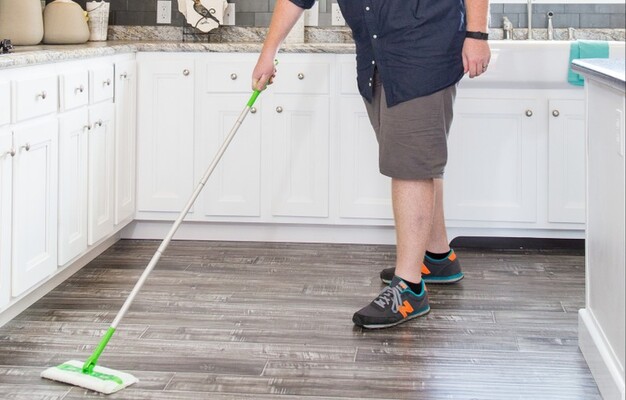
Keeping your floors clean can make your home look more inviting, comfortable, and healthy. However, different types of floors may require different cleaning methods and products. Here are 15 tips to help you keep your floors clean, from tile to hardwood:
- Sweep or vacuum regularly. This is the most basic and essential step to remove dust, dirt, and debris from your floors. You should sweep or vacuum at least once a week, or more often if you have pets or high-traffic areas. Use a soft-bristled broom or a vacuum with a brush attachment to avoid scratching your floors.
- Mop with the right solution. Depending on the type of floor you have, you may need to use a different cleaning solution to mop your floors. For example, you can use a mixture of vinegar and water for laminate, tile, and vinyl floors; a mild or pH-neutral soap for hardwood floors; and a special cleaner for stone floors. Always wring out your mop well and use a microfiber cloth or mop head to avoid leaving streaks or residue.
- Dry the floors after mopping. To prevent water damage, mold, or mildew, you should always dry your floors after mopping them. You can use a dry cloth, a towel, or a fan to speed up the drying process. You can also open the windows or turn on the air conditioner to improve the air circulation and reduce the humidity.
- Use baking soda and vinegar for tough stains. If you have stains on your tile, laminate, vinyl, or hardwood floors, you can use baking soda and vinegar to remove them. Simply sprinkle some baking soda on the stain and spray some vinegar on top. Let it fizz for a few minutes and then scrub with a sponge or a brush. Rinse with water and dry with a cloth.
- Use rubbing alcohol for sticky spots. If you have sticky spots on your hardwood, laminate, vinyl, or tile floors, you can use rubbing alcohol to dissolve them. Simply dampen a cloth with rubbing alcohol and rub the spot until it comes off. Wipe with a clean cloth and dry with another cloth.
- Use hydrogen peroxide for dark stains. If you have dark stains on your hardwood floors, such as from water, wine, or pet urine, you can use hydrogen peroxide to lighten them. Simply pour some hydrogen peroxide on the stain and cover it with plastic wrap. Let it sit for several hours or overnight and then wipe it off with a damp cloth. Repeat if necessary until the stain is gone.
- Use lemon juice for rust stains. If you have rust stains on your tile or stone floors, you can use lemon juice to remove them. Simply squeeze some lemon juice on the stain and let it sit for about 10 minutes. Then scrub with a sponge or a brush and rinse with water. Dry with a cloth.
- Use denture tablets for grout stains. If you have grout stains on your tile floors, you can use denture tablets to whiten them. Simply dissolve some denture tablets in water and pour the solution over the grout lines. Let it sit for about 15 minutes and then scrub with a toothbrush or a grout brush. Rinse with water and dry with a cloth.
- Use furniture polish for scuff marks. If you have scuff marks on your hardwood or laminate floors, you can use furniture polish to erase them. Simply spray some furniture polish on the scuff mark and rub it with a cloth until it disappears. Wipe with a clean cloth and buff with another cloth.
- Use WD-40 for crayon marks. If you have crayon marks on your hardwood, laminate, vinyl, or tile floors, you can use WD-40 to remove them. Simply spray some WD-40 on the crayon mark and wipe it off with a cloth. Rinse with water and dry with another cloth.
- Use nail polish remover for nail polish spills. If you have nail polish spills on your hardwood, laminate, vinyl, or tile floors, you can use nail polish remover to clean them up. Simply dab some nail polish remover on the spill with a cotton ball or a paper towel and rub it gently until it comes off. Wipe with a damp cloth and dry with another cloth.
- Use olive oil for scratches. If you have scratches on your hardwood floors, you can use olive oil to hide them. Simply rub some olive oil on the scratch with a cloth and let it soak in for about an hour. Wipe off the excess oil with another cloth and buff with another cloth.
- Use floor mats and rugs for protection. To prevent dirt, dust, moisture, and scratches from damaging your floors, you can use floor mats and rugs in strategic places. For example, you can place floor mats at the entrances, in the kitchen, in the bathroom, and under the furniture. You can also use rugs in the living room, dining room, and bedroom to add warmth and comfort.
- Use felt pads for furniture legs. To prevent furniture legs from scratching your floors, you can use felt pads to cushion them. Simply stick some felt pads under the legs of your chairs, tables, sofas, beds, and other furniture pieces. You can also use coasters or trays for plant pots and other items that may leave marks on your floors.
- Use a no-shoes policy for cleanliness. To prevent dirt, dust, mud, and germs from entering your home and dirtying your floors, you can use a no-shoes policy for yourself and your guests. Simply leave your shoes at the door or in a designated area and wear slippers or socks indoors. You can also provide some spare slippers or shoe covers for your guests.
